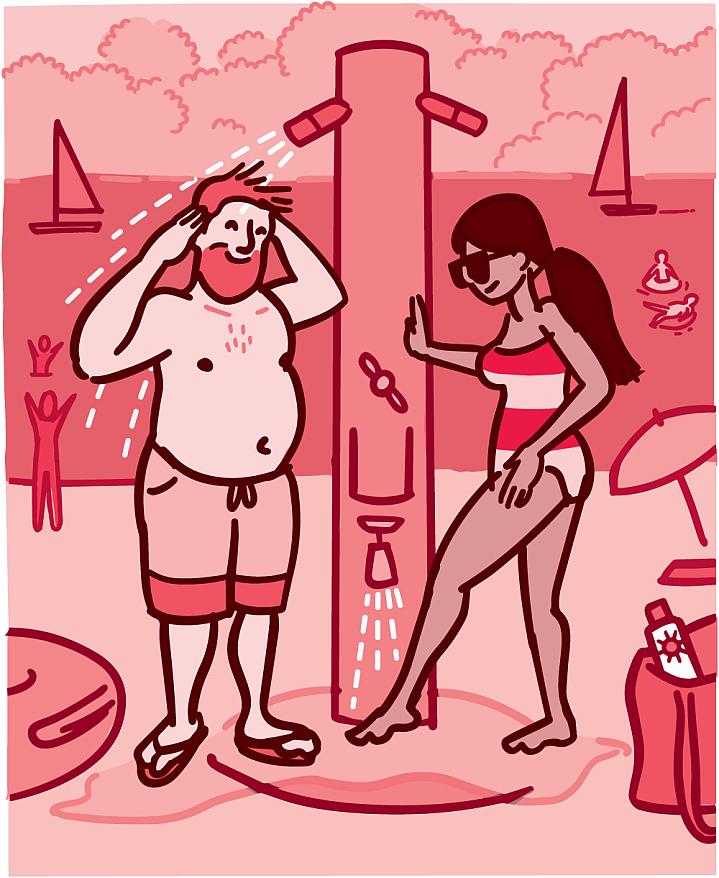Staying Safe in the Water
Guard Against Germs While Swimming

When the weather gets warm, you may want to get outside for some fun in the sun. Going to a pool, lake, or beach often tops that list. Spending time in the water can bring health hazards. But some simple habits can help keep your summer fun—and healthy.
Many different germs and organisms can live in water. These include bacteria, viruses, parasites, and plant matter that can make you sick.
A lot of germs that live in water cause stomach and intestinal upset. These can bring diarrhea or vomiting. You can also get skin rashes, ear or eye pain, and a cough or congestion after swimming in contaminated waters.
Common culprits for gut symptoms after swimming are parasites. These include Cryptosporidium (Crypto) and Giardia intestinalis. But bacteria, like E. coli, and viruses can also be the cause.
Many water-borne germs come from the poop of people and animals. So it’s important to never go to the bathroom or to change dirty diapers near the water. If you bring a pet, be sure to pick up after them.
Pools are often treated with a chemical called chlorine to kill germs. But it doesn’t work on all of them immediately. Some, like Crypto, can linger for days despite the chlorine. And natural bodies of waters, like oceans and lakes, can’t be treated with chemicals.
“You can’t just look at the water and say, ‘I think that there’s an elevated level of bacteria,” says Dr. Dwayne Porter at the University of South Carolina. But scientists can test recreational waters for certain bacteria.
Porter’s group studies ways to monitor water conditions around the local beaches. They collect data about a bacteria called enterococcus. Enterococcus lives in the guts of people and animals. High levels of the bacteria can mean the water is contaminated with poop. That often means that other germs are present, too.
His group works with local partners to create daily water forecasts. The forecasts predict which areas may have high levels of bacteria. They alert local residents using the websites howsthebeach.org and howsmyscriver.org.
Porter and his colleagues plan to expand the alert system to include Vibrio vulnificus (Vibrio). Vibrio can make you very ill if you eat contaminated seafood. They are also flesh-eating bacteria. If they infect a wound on your skin and aren’t treated, it can lead to amputation or death.
The team is trying to figure out what factors can predict an increased risk of Vibrio infections. Changes to the water’s temperature and salt levels may increase the bacteria’s growth. Another possibility is toxic algae blooms. These release nutrients that help the bacteria thrive.
Certain types of algae also release toxins that contaminate the water and the air. So, in general, it’s important to avoid areas with toxic algae and not eat the seafood found there.
Being aware of local water conditions before you go to the beach can help you stay safe. “If there are concerns with either the bacteria or other hazards, focus on other activities to do,” Porter advises.
For more tips on staying safe in the water, see the Wise Choices box.
NIH Office of Communications and Public Liaison
Building 31, Room 5B52
Bethesda, MD 20892-2094
nihnewsinhealth@od.nih.gov
Tel: 301-451-8224
Editor: Harrison Wein, Ph.D.
Managing Editor: Tianna Hicklin, Ph.D.
Illustrator: Alan Defibaugh
Attention Editors: Reprint our articles and illustrations in your own publication. Our material is not copyrighted. Please acknowledge NIH News in Health as the source and send us a copy.
For more consumer health news and information, visit health.nih.gov.
For wellness toolkits, visit www.nih.gov/wellnesstoolkits.



